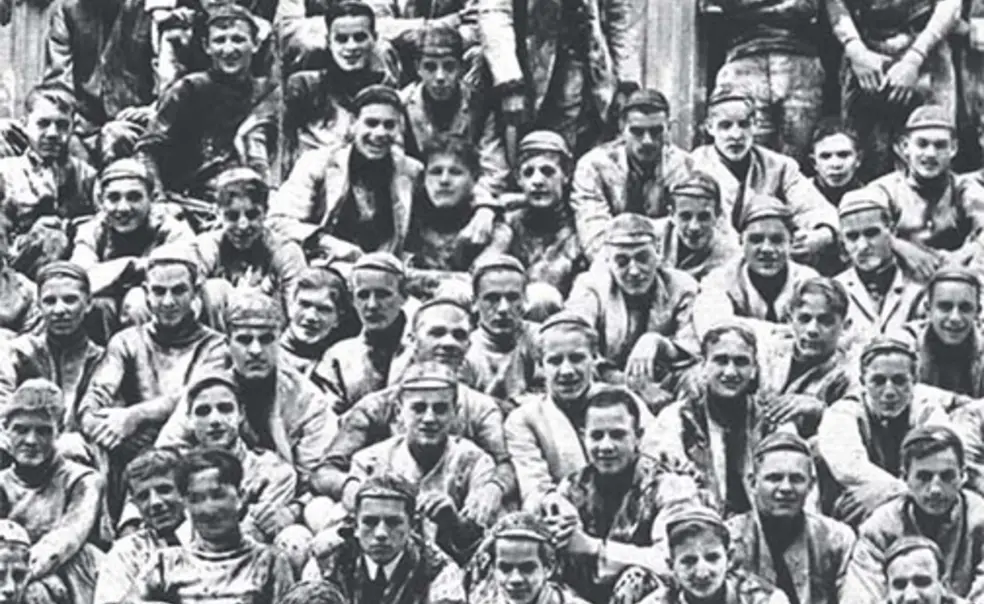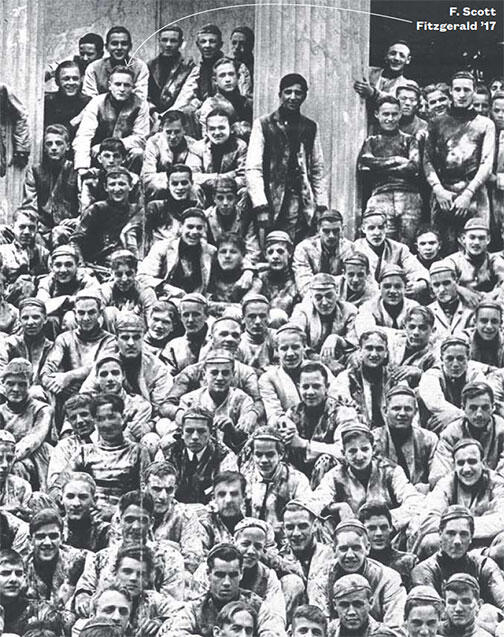Our Future Star Arrives
One Friday afternoon — Oct. 3, 1913 — 430 freshmen were pelted with bags of flour on the steps of Whig Hall in that zany annual ritual called the Flour Picture. Among the messy throng was a small, blonde-headed kid from Minnesota named F. Scott Fitzgerald.
He entered with the Class of 1917, boarding at 15 University Place, but eventually fell back a year and then failed out. Nonetheless, Fitzgerald’s youthful novel about Princeton life, This Side of Paradise, published in 1920, still colors our perceptions of the University. We have long chafed from his caricature: “the pleasantest country club in America.”
“From the first he loved Princeton,” Fitzgerald writes of his protagonist, Amory Blaine, including “the wild moonlight revel of the rushes.” The last of these riot-like contests on Cannon Green came the evening after the Flour Picture was taken, when the freshmen marched up from Brokaw Field, then charged around the east end of Whig to attack the Class of 1916.
Central to Paradise is the godlike captain of the football team, modeled after Hobey Baker 1914, who addressed the freshman class in Murray Hall as the school year began that October a century ago: “The man who would make good in college athletics must make sacrifices,” Baker said. “Such discipline not only makes athletes but makes men.”
Fitzgerald, like Blaine, dreamed of playing freshman football but was cut from the team that month. In a fateful move, Fitzgerald instead joined the staff of the humor magazine, Tiger — and turned his life toward literature.













No responses yet